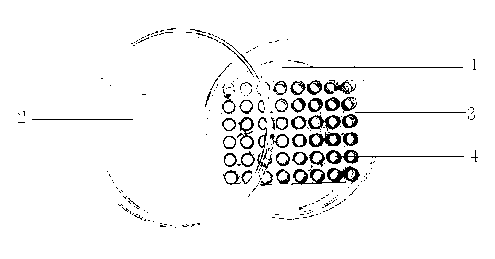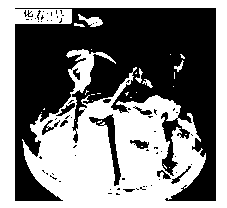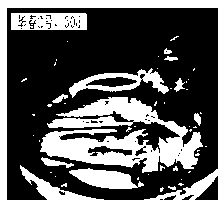Agrobacterium local invasion method applied in soybean hypocotyl explant transformation system, and device thereof
A technology of explants and Agrobacterium, applied in the field of genetic engineering, can solve problems such as adverse effects on the regeneration of adventitious buds of explants
- Summary
- Abstract
- Description
- Claims
- Application Information
AI Technical Summary
Problems solved by technology
Method used
Image
Examples
Embodiment 1
[0053] This embodiment provides a device for local infection of Agrobacterium applied to soybean hypocotyl explant transformation recipient system, see attached figure 1 As shown, including a culture dish 1 and a culture dish cover 2, a base plate 3 is fixed in the culture dish, and a through post hole 4 is arranged on the base plate. The bottom distance is 1 mm to 2 mm; the inner diameter of the through column hole is suitable for the size of the stem diameter of the explant. The device can be placed in an autoclave for routine sterilization. There may be several through-pillar holes.
[0054] As preferably, the substrate adopts a PCR plate 3 that is usually used for nucleotide fragment amplification, neatly cut off the small tubes at the bottom of the PCR plate to form through column holes 4, and keep the small tubes on the four corners as supports, and the supports will PCR Plate 3 is supported in a petri dish. According to the size of the petri dish and the size of the ...
Embodiment 2
[0083] Example 2 The effect of pre-culture time on the selection survival rate of hypocotyl explants
[0084] In this example, soybean seedlings with a seedling age of 5 days were cut to obtain hypocotyl explants, which were treated with short-term BA solution (same as in Example 1), and then pre-cultivated for 0, 1, and 2 days. The morphological upper end of the explants was locally infected with an Agrobacterium solution with an OD value of 0.5-1.0 for 20 minutes. After 3 days of co-cultivation, the explants were inoculated vertically into the recovery medium without antibiotics. The explants were cultured for 20 days, and finally the explants were inoculated horizontally on the selection medium and cultured for 30 days. The experimental results are shown in Table 1.
[0085] Table 1 Effect of pre-culture time on explant survival rate
[0086] time / d Survival rate / % 0 20.83b 1 45.83a 2 40.28a
[0087] Note: The data were analyzed using SP...
Embodiment 3
[0089] Example 3 Effect of co-cultivation time on survival rate of hypocotyl explant selection
[0090] In this example, soybean seedlings with a seedling age of 5 days were cut to obtain hypocotyl explants, which were treated with BA solution for a short period of time, and then pre-cultured for 1 day, using Agrobacterium with an OD value of 0.5-1.0 The morphological upper end of the explants was partially infected with the bacterial solution for 20 minutes, and after co-cultivation for 0, 3, and 6 days, the explants were inoculated vertically on the recovery medium without antibiotics and cultured for 20 days , and finally the explants were inoculated horizontally on the selection medium and cultured for 30 days. The experimental results are shown in Table 2.
[0091] Table 2 Effect of co-culture time on explant survival rate
[0092] time / d Survival rate / % 0 20.00b 3 55.83a 6 62.50a
[0093] Note: The data were analyzed using SPSS Statis...
PUM
 Login to View More
Login to View More Abstract
Description
Claims
Application Information
 Login to View More
Login to View More - R&D
- Intellectual Property
- Life Sciences
- Materials
- Tech Scout
- Unparalleled Data Quality
- Higher Quality Content
- 60% Fewer Hallucinations
Browse by: Latest US Patents, China's latest patents, Technical Efficacy Thesaurus, Application Domain, Technology Topic, Popular Technical Reports.
© 2025 PatSnap. All rights reserved.Legal|Privacy policy|Modern Slavery Act Transparency Statement|Sitemap|About US| Contact US: help@patsnap.com



